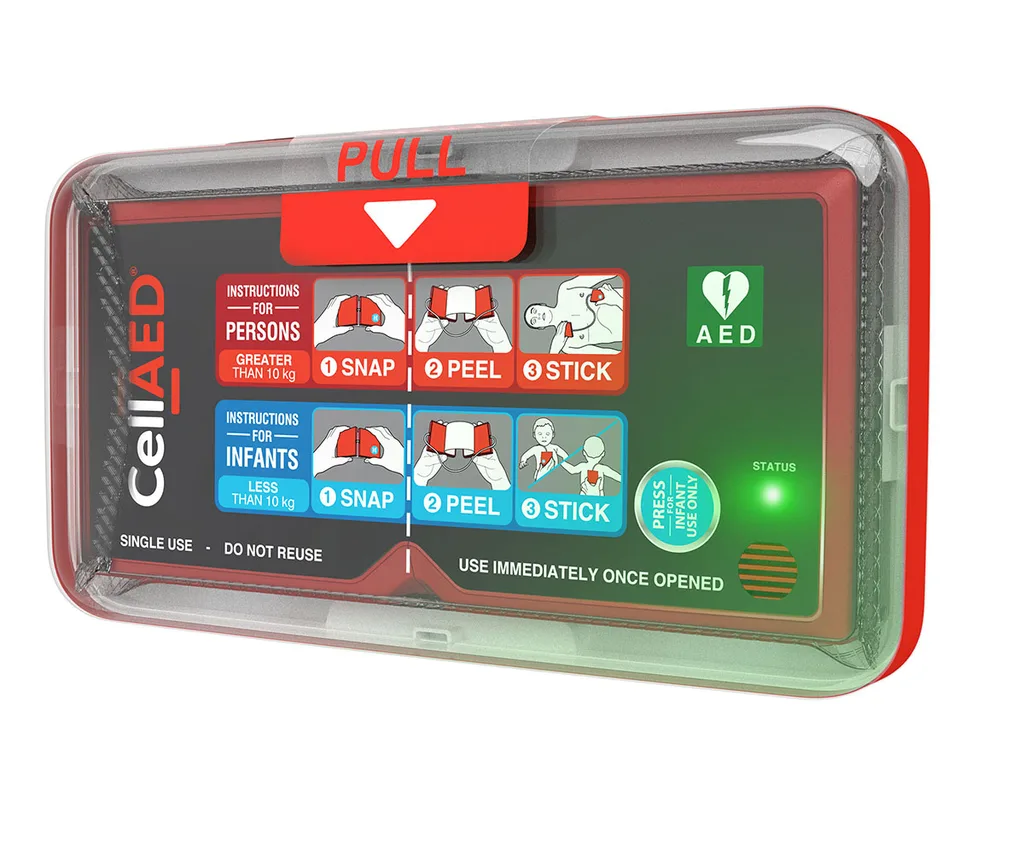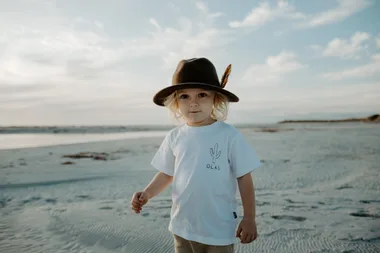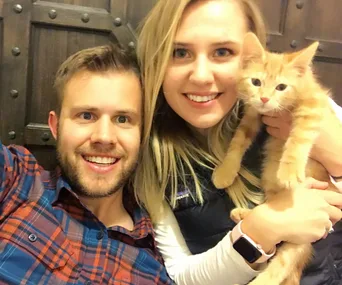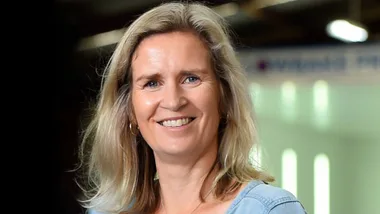Donovan Casey, 60, shares his incredible story with Take 5…
My phone slipped out of my hand and fell down the side of the bed.
“Darn,” I said.
I was lying in bed next to my wife Sarah, 41.
Suddenly, I heard some strange clucking noises.
I looked over and realised they were coming from her.
At first, I thought she was laughing at something.
But within seconds her tongue lolled out of her mouth.
“Oh my God!” I cried out.
I raced over to her side of the bed and stood looking at her in complete shock.
It was August 2014. We’d moved back to Sydney the year before after five years in Fiji.
I’d learnt CPR for my sky diving business that I’d been running for 20 years and now realised I’d need to administer it on my own wife.

Me, Sarah and her brother, Mark (right). (Image: Supplied)
Fishing my phone out from under the bed, I called Triple 0 and began chest compressions.
Six long minutes later paramedics finally arrived.
They placed a defibrillator onto Sarah’s chest and her body jolted into the air with the electrical shock.
They worked on her for forty minutes.
“She’s stable, we’re taking her to hospital,” one said at last.
They high-fived each other in the parking lot.
In hospital, Sarah remained in a coma.
Thirteen days later, she opened her eyes. They brightened when I walked into her room so I knew she wasn’t brain-damaged.
“You’re going to be ok,” I said, relieved.
She was in hospital for another 100 days.
In that time, I learnt it was extremely rare for paramedics to revive patients who had gone into cardiac arrest.
The reason the paramedics high-fived each other was because 33 of their cardiac call outs before Sarah and 40 after her had resulted in death.
The current survival rate from cardiac arrests is 3 per cent, yet 16,500 have one around the world every day.
Also, 80 per cent of cardiac arrests happen at home.

CellAED, a lightweight automated defibrillator. (Image: Supplied)
I decided every home should have its own defibrillator, but the ones on the market were heavy, bulky and cost thousands of dollars.
So I teamed up with my friend Erol, an electrical engineer, who helped me design CellAED, a lightweight automated defibrillator, the size of a paperback novel.
It took years of prototypes and red tape but finally it was launched in December 2021.
We’ve sold 10,000 so far and are on track to sell 100,000 next year and 400,000 the year after that.
My goal is to place one in every home and office around the world.
Meanwhile, Sarah, 49, is doing well.
She’s very busy working in the business.
If we ever have an argument I raise my eyebrows.
“Remember I saved your life,” I tease her.
Here’s hoping my invention can save many more.

Donovan and his wife Casey. (Image: Supplied)









